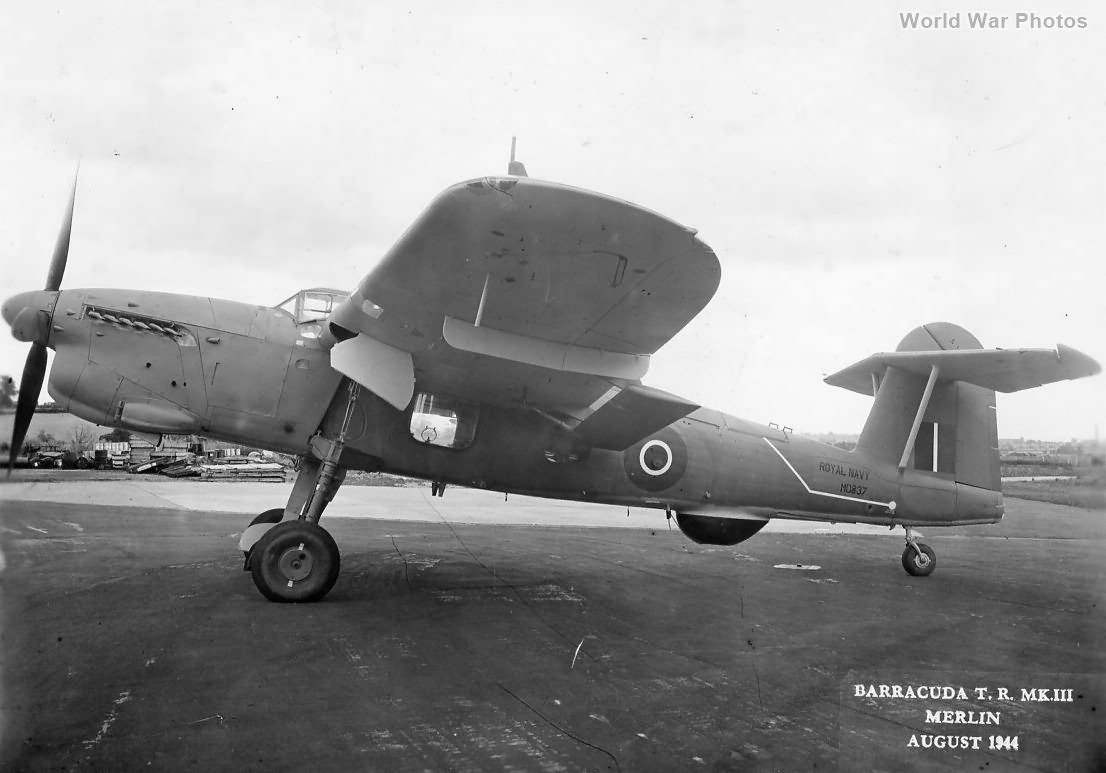As early as December 1941, development began on a centimetric radar intended for use in the Fairey Barracuda, a British carrier-borne aircraft. The radar, tested initially on Swordfish and Hudson aircraft, was eventually ordered into production under the designation ASV X. Before the introduction of ASV X, Barracuda Mk.I and the majority of Mk.II models were equipped with ASV UN, the standard naval radar at the time. This radar system required the installation of Yagi antennae on the upper wing surfaces. Although ASV UN performed adequately, it had its limitations, particularly in range and accuracy.
Introduction of ASV X and ASH Radars:
ASV X and Mk.III Enhancements:
- The introduction of ASV X radar represented a significant upgrade, and it was integrated into the Barracuda Mk.III. This installation necessitated a blister-shaped radome under the rear fuselage to house a parabolic antenna. The improved radar offered better performance in detecting and tracking targets, particularly submarines, which were a primary concern in naval operations.
ASH Radar Trials:
- In late 1944, Barracuda LS789 was used to test an American centimetric radar known as ASH (Air Service Homing), specifically the AN/APS-4 model. This radar was housed in a semi-recessed mini radome located below the port wing’s leading edge. The ASH radar was lighter and provided better target discrimination than the ASV X, though it lacked the latter’s comprehensive all-round coverage. Although plans were made to equip four squadrons with ASH radar, the limited availability of radar sets meant that it wasn’t widely adopted until mid-1945, by which time the urgency for its deployment had decreased significantly.
Radio Altimeters and Communication Systems:
Radio Altimeter Trials:
- In the spring of 1944, several Barracuda Mk.II and Mk.III aircraft were fitted with radio altimeters to facilitate night-time anti-submarine and torpedo attack missions. However, the trials revealed significant issues with these altimeters, particularly their susceptibility to receiving incorrect signals. This led to dangerous situations where pilots could be misled about their altitude, potentially flying 100 feet under the water or 100 feet above it when the altimeter indicated otherwise.
Challenges with Radio Communication:
- The Admiralty had ambitious plans to equip the Barracuda with a comprehensive suite of radio systems, including Medium Frequency (MF), High Frequency (HF), and Very High Frequency (VHF) equipment. However, the weight of these systems posed a significant challenge. The development of the VHF system was particularly slow, and it wasn’t until 1944 that any alternative radio setups became available.
- A local modification involved fitting fighter VHF radio sets so that Barracudas could communicate with their escorting fighters during strikes. These modifications were typically carried out at the squadron or unit level and were not part of the standard cockpit equipment. The general radio fit included the British ARI 5206 HF wireless telegraphy set or the American SCR 522 or AN/ARC-1 VHF R/T systems, with the latter becoming standard in the Barracuda Mk.III.
